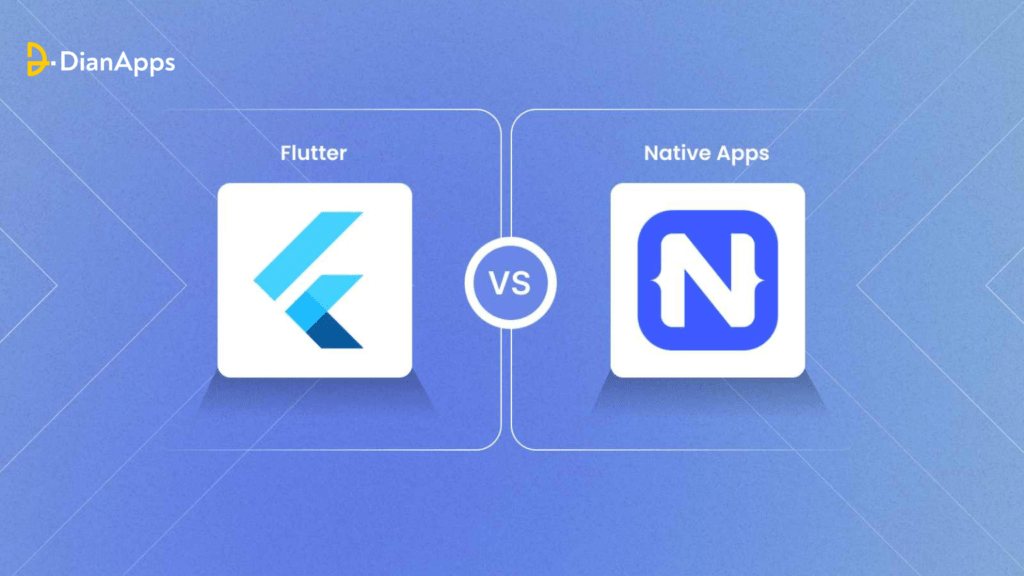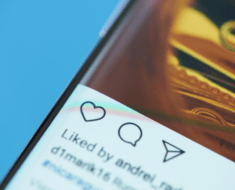
In a world where businesses seek cost-effective and efficient solutions for mobile app development, the rise of cross-platform frameworks has caught their attention.
Flutter, with its rapid growth since 2018, has emerged as a game-changer in industries like retail, fintech, and e-commerce.
This article aims to shed light on the Flutter vs native app development debate, exploring their scalability, user experience, and time-to-market advantages. Guided by experts’ analysis and real-world experience from a reputable mobile app development company, we’ll delve into the performance and business goals achieved by both Flutter and native technologies.
Throughout this article, we explained the differences between Flutter vs native app development from different angles.
Hence, after reading this article, you will find out what business goals both Flutter and native technologies help to achieve.
Flutter v/s Native Apps: Overview
Flutter
Flutter works on the “write once, run everywhere” principle. This implies that your development team must write a single set of code that can be deployed on any platform. As a result, it didn’t take long for Google’s Flutter framework to gain popularity after its massive launch in 2017. Flutter is now used by 42% of software developers, making it one of the most well-known front-end frameworks. Flutter is used by companies such as Google, Alibaba Group, BMW, eBay, and Square.
Despite being Google’s top pick for developing cross-platform apps, Flutter app development is a useful toolkit. It uses the Dart programming language to deliver high-quality user interface (UI) components and smooth animations. As a result, you can create high-performance Flutter apps that function similarly to native iOS and Android apps.
Native Apps
In contrast, Native app development is platform specific. You can create an app for either Android or iOS. When developing native apps, the device’s operating system vendor also decides which programming language is appropriate:
- Swift and Objective-C are iOS languages. The development environment is known as Xcode.
- Kotlin and Java are among the Android programming languages. The development environment is called Android Studio.
Native apps, on the whole, have few constraints, and their users can fully exploit sophisticated capabilities such as an accelerometer, camera, GPS, and so on. Users can obtain native applications from major app stores such as Google Play and the App Store.
Simultaneously, significant investments in professional native and Flutter app development company and other toolkits are required for the development and support of native apps. In turn, two separate development teams are needed for two separate platforms. They must also change the business logic, and duplicate the interface logic, and the layout.
Flutter vs Native Apps: Integration capabilities and features
The Flutter vs. native app comparison focuses on their integration capabilities and features.
Flutter offers:
- Integration of unique features from third-party libraries or plugins is simple, though it may appear complex to developers unfamiliar with Dart.
- For specific iOS and Android functions, additional plugins such as CocoaPods and Android Archive (AAR) are required.
- The integration of native modules with Android Studio’s Xcode may be constrained by the Flutter engine, but the documentation provides step-by-step instructions for successfully overcoming challenges
While Flutter can run on recent iOS versions such as iOS 14, its functionality may be subject to limitations and changes with each update. Finally, the decision between Flutter and native apps is influenced by factors such as desired features, programming language familiarity, and specific integration requirements.
Flutter vs Native Apps: Speed & Cost of Development
Flutter:
- Flutter supports the “write once, run anywhere” philosophy, allowing developers to write code once and run it on two different platforms. Because of the lower development costs, the development time will be significantly reduced.
- Giant players like Alibaba, Watermaniac, BMW, and PostMuse, among other tech companies have built their apps using Flutter app development services.
Native Apps:
- The time required to develop native mobile applications varies according to budget, timeframe, and scaling ability.
- Native technology can be used to create small-scale and enterprise-level apps that cater to iOS and Android users. As a result, either a massive development team is required, or two separate teams for iOS and Android are required.
- Because two scripts for two platforms with independent functionalities must be built, the project’s investment budget will grow.
- In other words, native technologies adhere to the principle of “write twice, run twice.”
Flutter vs Native Apps: Performance
Flutter:
- Flutter does not require a bridge between native modules because native components are available by default.
- The “hello world” app typically runs at 60 frames per second, with each frame taking less than 16 milliseconds to render on a given device.
- Flutter also makes use of the Skia graphics package, which allows the user interface to be redrawn whenever the application view changes.
- Flutter runs at 60 frames per second and can reach 120 frames per second
Native Apps:
- The native performance capabilities of iOS and Android allow apps to run even without the need for additional library packages.
- Despite “Core Animations,” native applications created using native technologies can operate at 60 FPS and 120 FPS.
- Typically, 30% to 45% of the total GPU performance is loaded over RAM by native GPU technologies.
- If the application is extensive due to native performance, native technologies can also require up to 118 MiB (Mebibyte) of device RAM.
- In the long run, choosing specific external-SDK alternatives to increase the speed with low memory utilization can overload the users’ devices.
Flutter vs Native Apps: Code Maintenance
Flutter:
- Flutter applications are easy to maintain because they share a single codebase.
- The code’s simplicity assists developers in identifying problems, locating external tools, and supporting third-party libraries.
- Furthermore, Flutter’s stateful Hot Reloading technology responds quickly to issues which ultimately facilitates every Flutter app development company.
- When compared to other native frameworks, it takes less time to release high-quality updates and make instantaneous changes to the program. This level of adaptability contributes to the company’s overall stability.
Native Apps
- Due to the fact that businesses will develop their app for particular platforms, maintaining a native application takes time and money.
- The reason is straightforward: two codebases require a lot of work to maintain, and in order to release separate upgrades, developers must regularly identify issues and problems for each platform.
- Additionally, the maintenance costs increase in direct proportion to the number of OS devices supported.
Will Flutter Take Control over Native App Development?
Flutter is not the first attempt to create a unified framework for mobile app development. It is, however, the most notable example of this type of framework currently on the market, and it has a well-deserved reputation.
It’s clear that Flutter has a number of advantages over native and cross-platform app development tools. Flutter claims to be less expensive, take less time to develop, and perform better. Although the Flutter app community is small and not as large as that of other platforms such as native app development languages, it is growing. No surprise, because it is an open-source technology with low pricing, the Flutter app development framework is now a good option for startups as well.
Bottom Line
In terms of Flutter vs. native iOS and Flutter vs. native Android, we’ve come to the following conclusions:
- Neither Flutter nor native technologies will wave a magic wand over your specific projects and business requirements; each case is unique.
- In terms of development speed and budget reduction, Flutter is a very promising cross-platform framework.
- In 2-3 months, it is possible to create MVP applications on Flutter. Full-fledged development on Flutter is typically 30% less expensive than developing two native apps.
- Native technologies are better suited for sophisticated niche applications with advanced features like GPS or rich animation.
So, are you ready to leverage the power of Flutter for your mobile app development needs?
If yes, then hire a top-notch Flutter app development company that can cater to all your business requirements. Their team of skilled developers is experienced in creating high-performance, cross-platform apps using Flutter’s cutting-edge technology. Get in touch and unlock the full potential of Flutter for your next app project.
Build something extraordinary together!






0 Comments